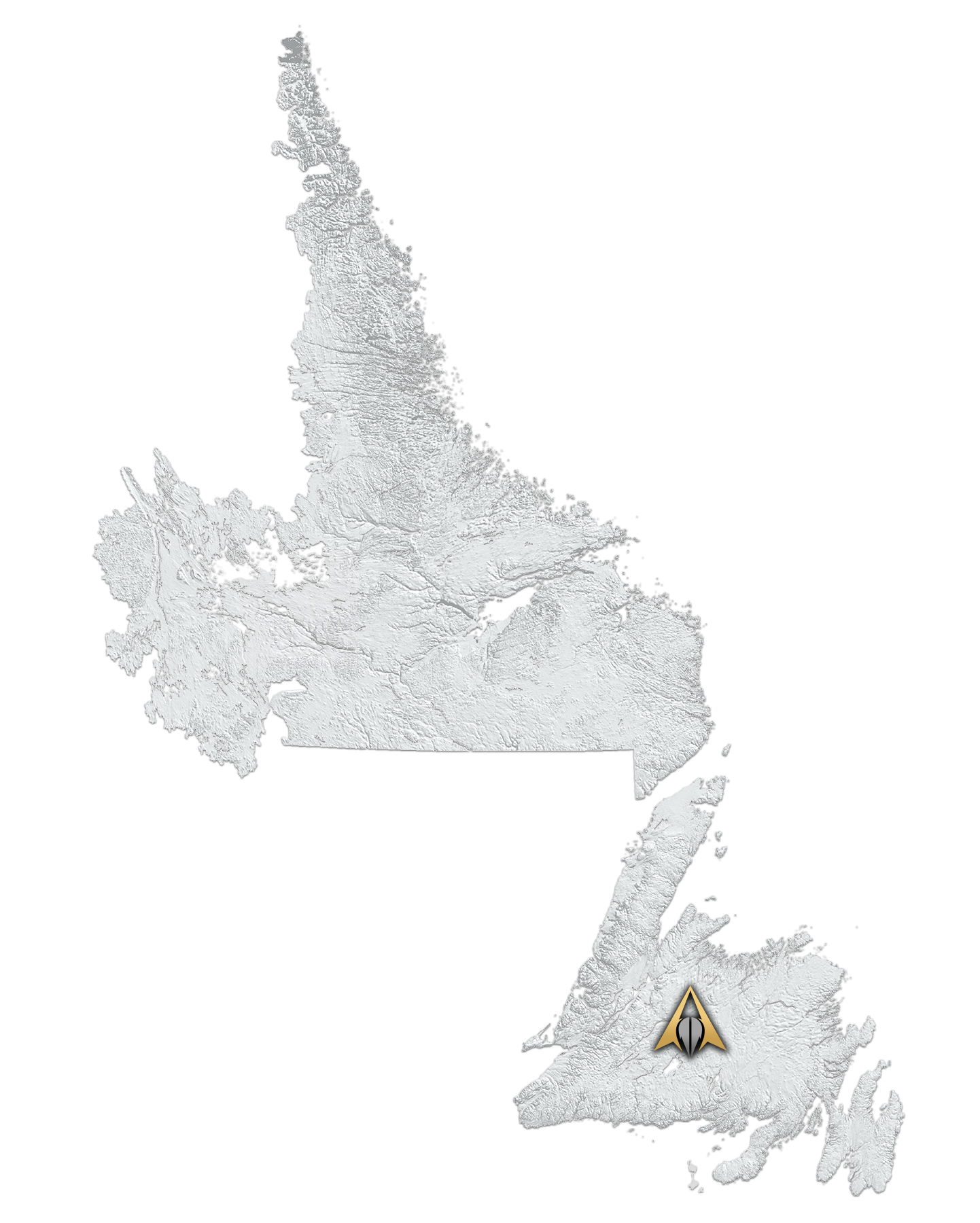


The Havens Steady property is a road-accessible Volcanogenic Massive Sulphide (VMS) deposit in south-central Newfoundland, located within the well-mineralized Dunnage Zone. Hosting a 1,000-meter strike length of lead-zinc-silver ± copper-gold mineralization, the property lies near past-producing VMS mines. With multiple untested geophysical anomalies and confirmed high-grade mineralization, Havens Steady presents significant potential for further resource expansion.

The Havens Steady Property is located within the Central Mobile Belt of the Dunnage Zone, a structurally complex and metallogenically significant division of the Appalachian Orogen in Newfoundland. This region comprises a series of Cambrian to Silurian volcanic and sedimentary sequences, deposited in a tectonically active environment associated with the closure of the Iapetus Ocean. The area is part of the Victoria Lake Supergroup, which hosts several distinct volcanic belts, including the Tally Pond, Tulks, and Long Lake belts, all of which have demonstrated prospectivity for Volcanogenic Massive Sulphide (VMS) mineralization. The geological history of the region is characterized by arc-related magmatism, accretionary tectonics, and subsequent deformation, creating favorable conditions for the formation of high-grade, polymetallic VMS deposits. Notably, the past-producing Duck Pond Mine, located approximately 15 km north of the property, is an example of the region’s potential, having produced copper, zinc, lead, silver, and gold-rich ores in a classic Kuroko-style VMS system.
The Point of the Woods volcanic belt, which underlies the Havens Steady Property, is a stratigraphic and structural equivalent to the Tally Pond Belt, known for its significant VMS occurrences. The belt consists of interbedded felsic volcanic and sedimentary sequences, which were subjected to multiple deformation events, leading to isoclinal folding, faulting, and localized structural thickening of mineralized zones. These processes played a critical role in the preservation and concentration of base metal sulfide mineralization. The felsic-dominated volcanic environments within the belt are analogous to those hosting world-class VMS deposits and are considered prime exploration targets for further economic mineralization. The regional lithostratigraphic setting, combined with the presence of favorable hydrothermal alteration, geophysical anomalies, and historical drilling data, strongly supports the potential for additional economic-scale mineralization at Havens Steady.
The Havens Steady Property is underlain by a complex assemblage of felsic volcanic, sedimentary, and lesser mafic units, representative of a Bimodal-Felsic VMS setting. The stratigraphic sequence consists of an upper argillite unit, a middle felsic volcanic unit, and a lower graphitic sedimentary unit, all of which have undergone moderate to high-grade metamorphism and deformation. The felsic volcanic sequence, which hosts the primary VMS-style mineralization, is characterized by silicified and sericitized tuffs, rhyolitic flows, and associated volcaniclastics, indicating a subaqueous depositional environment typical of Kuroko-style mineralization systems. Mineralization at Havens Steady is primarily hosted within this felsic sequence, where extensive hydrothermal alteration, including pervasive sericitization, silicification, and localized chloritization, has been documented, directly correlating with zones of base metal enrichment.
Structurally, the property exhibits evidence of tight isoclinal folding, thrust faulting, and stratigraphic stacking, resulting in significant variability in mineralization thickness and grade. The VMS mineralization at Havens Steady is found in three distinct stratigraphic horizons: (1) an upper massive sulfide zone, (2) a middle stringer sulfide zone, and (3) a lower disseminated sulfide zone. These horizons contain varying proportions of pyrite, sphalerite, galena, and lesser chalcopyrite and bornite, with historical drill intercepts confirming high-grade zinc-lead-silver mineralization, as well as localized gold and copper enrichment. Additionally, recent fieldwork and AI-assisted geological modeling have refined the understanding of structural controls on mineralization, highlighting potential structural traps and thickened zones that warrant further exploration. The combination of geological continuity, historical drilling results, and geophysical anomalies confirms the Havens Steady Property as a high-priority target for advanced exploration and resource development.
The Havens Steady deposit is classified as a Bimodal-Felsic Volcanogenic Massive Sulphide (VMS) system, a deposit type characterized by polymetallic sulfide mineralization formed in submarine volcanic arc environments. These deposits develop from hydrothermal fluids that circulate through the volcanic sequence, leaching metals from the surrounding rocks and precipitating them as layered massive sulfide accumulations on or near the seafloor. The mineralization at Havens Steady occurs in three distinct stratigraphic horizons, with the felsic volcanic package serving as the primary host for zinc-lead-silver ± copper-gold sulfide mineralization. The deposit exhibits classic VMS alteration signatures, including pervasive sericite-silicification with localized chlorite enrichment, which are directly associated with stringer-style, semi-massive, and massive sulfide zones. This Bimodal-Felsic VMS system shares geological and mineralogical similarities with other world-class Kuroko-type deposits, including the nearby Duck Pond Mine.